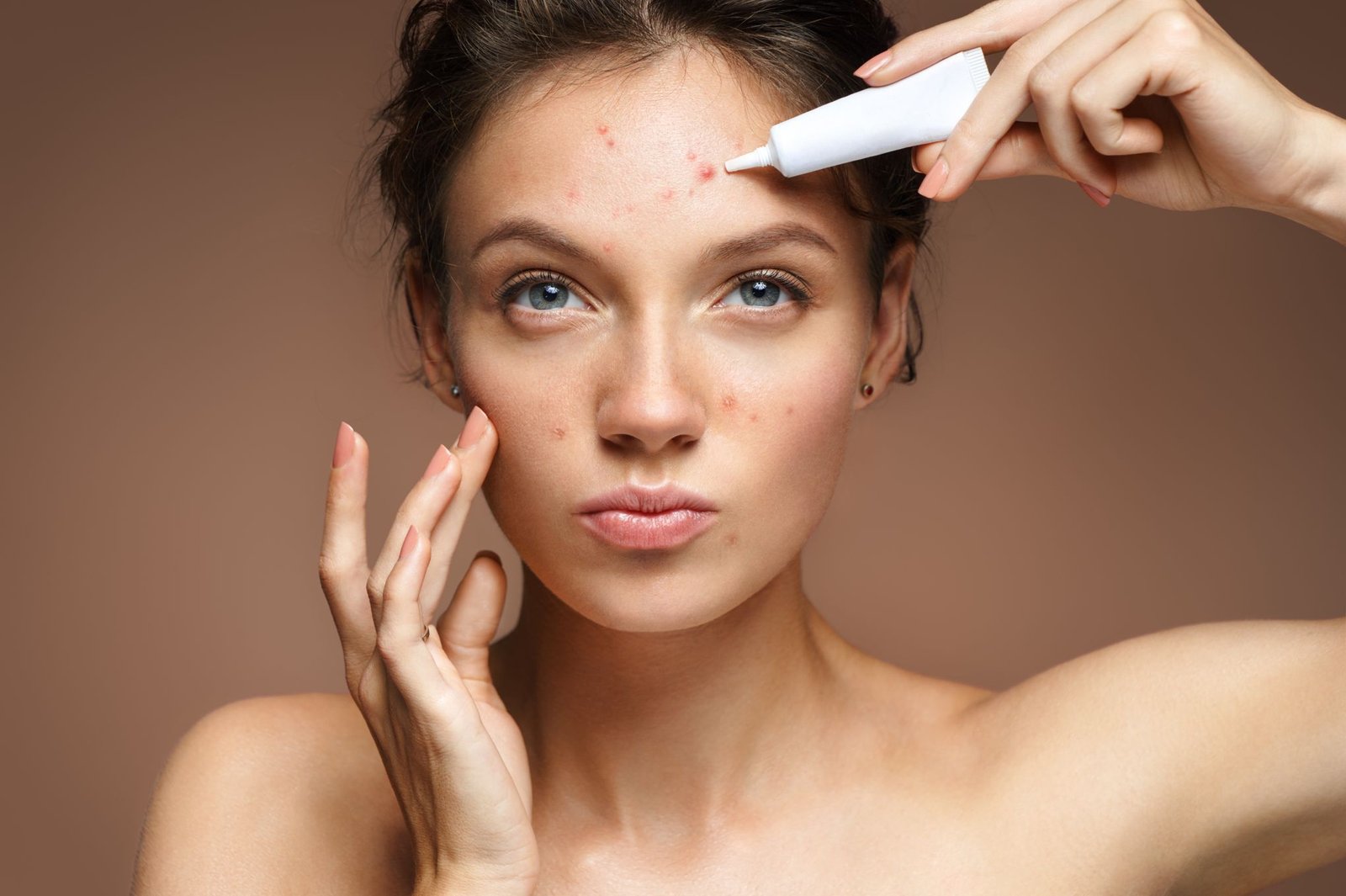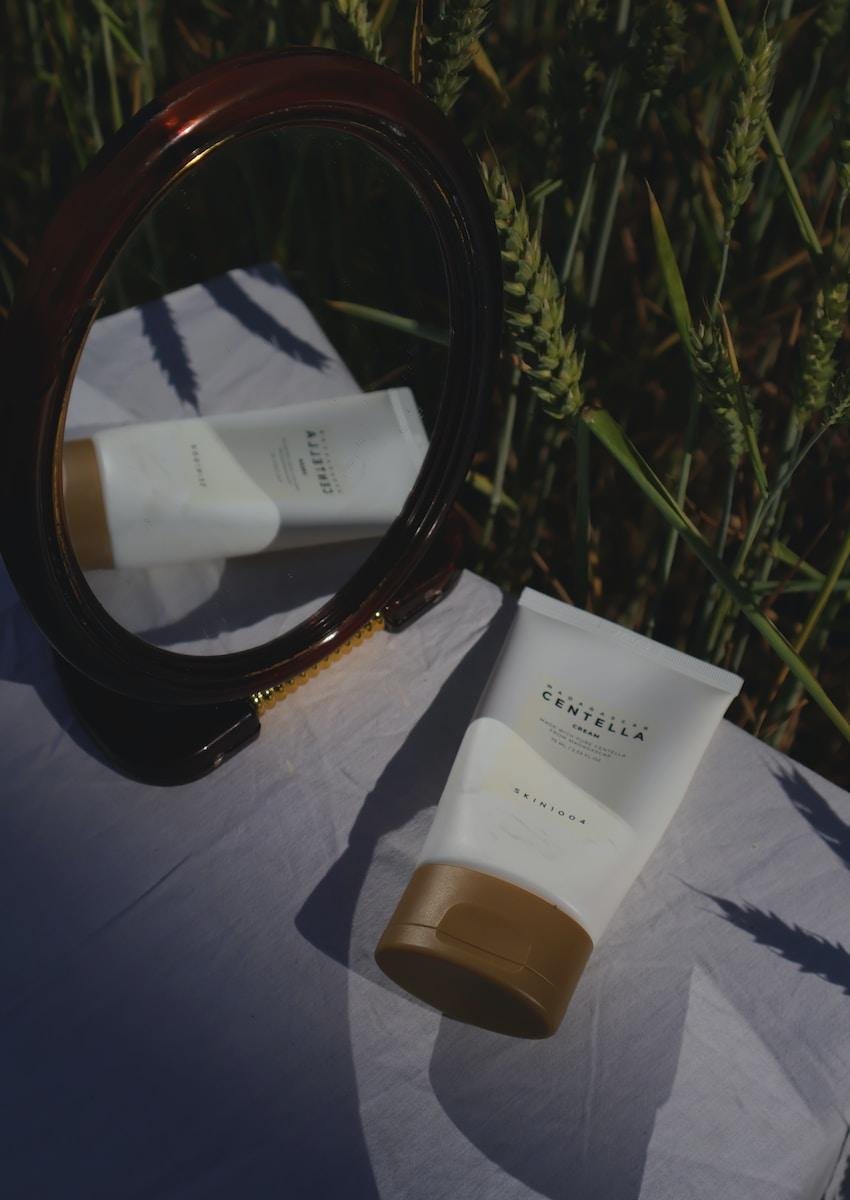Understanding your skin type is essential for selecting the right skincare ingredients, products, and routines to maintain optimal skin health. Skin type is determined by innate characteristics influenced by genetics, hormones, and the environment. By categorizing skin types, we gain insights into functionality, oiliness or dryness levels, sensitivity, and more, impacting overall appearance and well-being. Below, you will find a simple 5-step process to identify your skin type, unique attributes associated with each skin type, and recommendations for effective care.
How to Identify Your Skin Type
Identifying your skin type is a straightforward process that involves a series of simple steps: washing, observing, performing a tissue test, and conducting a pH test. To begin, make sure your face is freshly washed, clean, and dry, with no skincare products applied. This will establish an accurate baseline for assessing your skin type.
Below, we delve into each step in detail, exploring what you need to do and what to pay attention to throughout the process for the most accurate results.
Step 1) Wash Your Face
Thoroughly cleansing your face is crucial for accurately determining your skin type. By removing dirt, makeup, and impurities, your skin’s true characteristics become visible, providing a clearer understanding of its needs. If you’re unsure about your skin type, choose a gentle, pH-neutral cleanser. This helps maintain your skin’s natural balance, which is slightly acidic with a pH of around 5.5, supporting its protective barrier and overall health.
Avoid harsh soaps or cleansers with drying alcohols or sulfates as they can strip away natural oils and lead to dryness, irritation, or breakouts. Instead, opt for mild, fragrance-free cleansers specifically formulated for sensitive or all skin types.
Step 2) Observe Your Skin
Closely observe your skin to identify its key characteristics and imperfections. You can gather valuable information to determine your skin type accurately.
Here are some aspects to pay attention to:
- Texture: Note whether your skin feels smooth, rough, bumpy, or uneven.
- Pores: Observe the size and visibility of your pores. Are they small and barely noticeable, or larger and more prominent?
- Shine: Assess whether your skin appears shiny or greasy, especially in the T-zone (forehead, nose, and chin) area.
- Moisture: Pay attention to how your skin feels in terms of hydration. Does it feel tight, dry, or adequately moisturized?
- Sensitivity: Take note of any signs of sensitivity or reactivity. Does your skin easily become red, irritated, or prone to allergic reactions?
- Blemishes: Consider if you frequently experience breakouts, acne, or other types of skin blemishes.
Based on your observations, you can determine your skin type more accurately. Here are the common indicators for each skin type:
- Normal Skin: Typically has a smooth texture, small and barely visible pores, an even tone, and few blemishes or redness.
- Oily Skin: Often characterized by a shiny or greasy complexion, enlarged and visible pores, and a tendency for acne breakouts.
- Dry Skin: Often feels tight or dry, may have a dull or rough texture, visible flakiness, and can be prone to fine lines or wrinkles.
- Combination Skin: Exhibits characteristics of both oily and dry skin. The T-zone area (forehead, nose, and chin) tends to be oilier, while the cheeks may be normal to dry.
- Sensitive Skin: Reacts easily to various factors, such as certain products, environmental triggers, or changes in temperature. It can be prone to redness, irritation, and may feel tight or itchy.
Step 3) Perform the Tissue Test
The tissue test is a simple method to assess your skin’s oiliness or dryness.
Here’s how to perform the test:
- Start with a clean, dry face. Ensure that no skincare products or moisturizers have been applied recently.
- Take a clean tissue paper and gently press it on different areas of your face. Pay attention to the forehead, nose, cheeks, and chin.
- After a few seconds, remove the tissue paper and observe the results.
The tissue test provides insights into the oiliness or dryness of your skin. Here’s how to interpret the results for each skin type:
- Normal or Balanced Skin: If there is only a slight hint of oil on the tissue paper, and your skin feels comfortable without tightness, you likely have normal or balanced skin. The tissue may show a small amount of oil, but it should not be overly greasy.
- Oily Skin: If you notice significant oil residue on the tissue paper, especially in the T-zone area (forehead, nose, and chin), it indicates that you have oily skin. The tissue may appear visibly greasy.
- Dry Skin: If there is no oil residue or minimal oil on the tissue paper, and your skin feels dry or tight, it suggests that you have dry skin. The tissue may appear clean and free of oil.
- Combination Skin: If you observe oil only in the T-zone area (forehead, nose, and chin) while the rest of your face feels dry or normal, it indicates that you have combination skin. The tissue will show oil in specific areas while remaining clean in others.
- Sensitive Skin: The tissue test may not specifically indicate sensitivity. However, if you have sensitive skin, you may notice redness or irritation after performing the tissue test. Sensitivity is more related to how your skin reacts to certain products or environmental factors.
Step 4) Understand Skin pH Level
The pH level of your skin plays a crucial role in maintaining its health and balance. It indicates the acidity or alkalinity of the skin’s surface, measured on a scale ranging from 0 to 14, with 7 representing neutrality.
For optimal skin health, the ideal pH level is slightly acidic, approximately 5.5. To measure the pH level of your skin, pH testing strips provide a simple and effective method.
Follow these steps to accurately gain insights into your skin’s pH level:
- Cleanse your face with a gentle cleanser and pat it dry. Don’t apply additional products.
- Take a pH testing strip and press it against different areas of your face, such as the forehead, cheeks, and chin.
- After a few seconds, compare the color of the strip to the provided color chart that accompanies the pH testing strips.
These test results can give you insights into your skin type based on the measured pH level. Here’s how to interpret the results for each skin type:
- Normal Skin: If the pH value falls within the range of 4.5-5.5, it indicates that your skin has a balanced pH level, which is generally associated with normal or well-balanced skin types.
- Oily Skin: If the pH value reads below 5.5, it indicates that your skin is more acidic, which is common for oily skin types.
- Dry Skin: If the pH value reads above 5.5, it suggests that your skin is less acidic or more alkaline, which is typical for dry skin types.
- Combination Skin: For combination skin, the pH test results may vary depending on the specific areas of your face. The T-zone (forehead, nose, and chin) might have a lower pH value, while the cheeks may fall within the normal pH range.
- Sensitive Skin: The pH test alone may not specifically indicate sensitivity. However, individuals with sensitive skin often have a more delicate skin barrier and may exhibit a slightly higher pH value due to impaired acid mantle function.
Step 5) Reassess Your Skin
It’s important to recognize that your skin type may not remain static throughout your life. Several factors can influence changes in your skin type. Here are some common factors to consider:
- Age: As you age, your skin undergoes natural changes. For example, the skin may become drier, thinner, or more prone to wrinkles as it matures.
- Hormonal fluctuations: Hormonal changes, such as those that occur during puberty, pregnancy, or menopause, can impact your skin type. Hormonal imbalances can lead to increased oiliness, acne breakouts, or dryness.
- Environmental factors: Changes in season or climate, exposure to pollution, sun exposure, and other environmental factors can affect your skin’s behavior and potentially alter your skin type.
- Skincare routine and products: The skincare products you use and the routine you follow can influence your skin type. Certain products, like Tretinoin or Accutane can dry the skin and increase sensitivity, while certain ingredients may cause skin dehydration or a compromised skin barrier.
 What are The Different Skin Types?
What are The Different Skin Types?
Skin can be categorized into five primary types: normal, dry, oily, combination, and sensitive. Each skin type has its unique characteristics and needs specific care to ensure comfort, smoothness, and suppleness throughout the day.
Once you have identified your skin type using the steps above, click on the skin type details below that closely matches your results to learn more about its specific traits.
Normal Skin Type
- Good oil-water balance: Normal skin maintains a healthy equilibrium of sebum (natural oil) and moisture, resulting in optimal hydration.
- Small pores: The pores of normal skin are typically small and refined, not easily visible.
- Smooth texture: Normal skin has a smooth and even texture, lacking significant roughness or flakiness.
- Few imperfections: Compared to other skin types, normal skin is less prone to acne breakouts, redness, or sensitivity.
Oily Skin Type
- Excessive sebum production: Oily skin tends to produce more sebum than necessary, leading to an oily or greasy appearance.
- Enlarged pores: The pores on oily skin are often larger and more visible, as they can become clogged with excess oil and debris.
- Prone to acne: Oily skin is more prone to acne breakouts, including blackheads, whiteheads, and pimples, due to the increased sebum production and clogged pores.
- Sensitive to environmental factors: Oily skin can be sensitive to environmental factors such as humidity, heat, and pollution.
Dry Skin Type
- Insufficient sebum production: Dry skin produces less sebum than normal, resulting in a lack of natural oils to keep the skin adequately moisturized.
- Tightness and dryness: Dry skin often feels tight and may experience a sensation of dryness or dehydration, especially after cleansing or exposure to environmental factors.
- Dull or rough texture: Dry skin may have a rough or flaky texture, lacking the smoothness and softness associated with well-hydrated skin.
- Fine lines and wrinkles: Dry skin is more prone to developing fine lines and wrinkles due to the lack of moisture that helps plump and firm the skin.
Combination Skin Type
- Oiliness in the T-zone: The T-zone, which includes the forehead, nose, and chin, tends to be oilier than the rest of the face.
- Dryness in other areas: The cheeks and other parts of the face may experience dryness or normal skin characteristics.
- Varying pore sizes: Combination skin often has larger pores in the T-zone and smaller pores in other areas.
- Potential for blemishes: The oilier areas of combination skin are more prone to blackheads, whiteheads, and occasional breakouts.
Sensitive Skin Type
- Easily irritated: Sensitive skin is highly reactive and can become irritated by factors such as weather conditions, harsh ingredients, fragrances, or excessive heat.
- Redness: Sensitive skin often exhibits redness, which can be persistent or occur as a reaction to stimuli.
- Sensations of discomfort: Sensitive skin may feel tight, itchy, or stinging even without any apparent triggers.
- Fragile skin barrier: Sensitive skin tends to have a compromised protective barrier, making it more susceptible to external irritants.
Tailoring Your Skincare to Your Skin Type
Once you’ve identified your skin type, you’re well on your way to learning how to care for your skin. Each skin type has different needs and requirements, but there are also some universal rules for skincare for all types.
General skincare tips include:
- Consistent cleansing: Gently cleanse your face twice a day to remove dirt, oil, and impurities.
- Gentle exfoliation: Exfoliate 1-2 times a week with a mild chemical exfoliant to remove dead skin cells and promote skin renewal.
- Moisturize regularly: Apply a suitable moisturizer to hydrate and nourish your skin.
- Protect from the sun: Use sunscreen with at least SPF 30 to shield your skin from harmful UV rays.
- Avoid harsh products: Steer clear of harsh cleansers, alcohol-based toners, and abrasive scrubs that can irritate the skin.
- Hydrate from within: Drink an adequate amount of water to keep your skin hydrated from the inside out.
- Balanced diet: Consume a nutritious diet rich in fruits, vegetables, and antioxidants to support skin health.
Cleansers
Normal skin: Look for mild, fragrance-free, and pH-neutral cleansers suitable for all skin types to maintain moisture levels and protect the skin barrier.
Oily skin: Opt for foaming or gel-based cleansers that control excess oil and minimize shine with ingredients like salicylic acid or tea tree oil, to regulate oil production and prevent breakouts.
Dry skin: Choose hydrating cream cleansers that don’t strip away natural oils with moisturizing ingredients such as hyaluronic acid, glycerin, or ceramides to replenish moisture and enhance the skin’s barrier function.
Combination skin: Use balancing cleansers with niacinamide or witch hazel that address both oily and dry areas and regulate oil production in the T-zone while providing hydration to drier areas.
Sensitive skin: Select gentle, fragrance-free cleansers specifically formulated for sensitive or reactive skin that contain soothing ingredients like aloe vera, chamomile, or oat extract, which help calm and protect sensitive skin from irritation.
Toners and Serums
Normal Skin: Use hydrating toners with ingredients like hyaluronic acid and refreshing serums with antioxidants or anti-aging properties.
Oily Skin: Opt for oil-controlling toners with ingredients like salicylic acid or witch hazel, along with lightweight serums to balance oil production.
Dry Skin: Choose hydrating toners with ingredients like hyaluronic acid and soothing serums with ceramides or botanical oils for deep hydration.
Combination Skin: Look for balancing toners with ingredients like niacinamide and lightweight serums that address both oily and dry areas.
Sensitive Skin: Opt for gentle and soothing toners with ingredients like aloe vera or chamomile that are free from potential irritants like fragrance or harsh chemicals.
Moisturizers
Normal Skin: Opt for moisturizers with water-based formulas, or ingredients like hyaluronic acid to provide hydration without feeling heavy, and promote a smooth complexion.
Oily Skin: Choose oil-free or mattifying moisturizers with lightweight, gel-like textures. Look for ingredients like silica or dimethicone to control shine and minimize the appearance of pores while providing essential hydration without adding extra oil.
Dry Skin: Go for rich, emollient moisturizers containing ingredients like shea butter, ceramides, or natural oils to deeply hydrate and nourish the skin.
Combination Skin: Use lightweight moisturizers on normal or oily areas and richer moisturizers on dry areas.
Sensitive Skin: Look for lightweight and fragrance-free moisturizers with soothing ingredients like aloe vera or chamomile to help calm and protect the skin.




